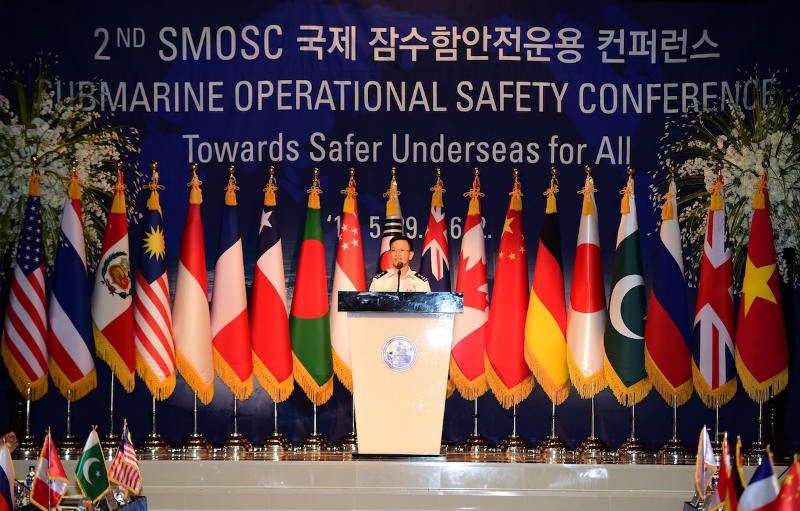Naval forces from the Asia Pacific region have gathered to discuss ways to boost underwater safety at the second Submarine Operational Safety Conference (SMOSC) from 29 May to 2 Jun in Jinhae Naval Base, South Korea.
The delegates discussed a range of measures that can be taken to enhance submarine operations safety.
For example, the Republic of Singapore Navy (RSN) proposed the idea of information sharing via a Submarine Safety Information Portal to provide information on vessels in the vicinity, and also to establish a set of Underwater Code for Unplanned Encounters at Sea (CUES).
The conference is held in conjunction with Exercise Pacific Reach, a multilateral submarine escape and rescue exercise, which runs from 25 May to 3 Jun. Participating nations include Australia, Japan, Malaysia, the Republic of Korea, and the United States. Also present are military observers from 22 countries.
The RSN is participating in the exercise with MV Swift Rescue, a submarine rescue support vessel, to conduct rescue drills with submarines from the Republic of Korea Navy (ROKN) and the Royal Australian Navy.
Explaining the need to focus on submarine safety, Head Naval Operations Rear-Admiral (RADM) Timothy Lo said: "Over the last 10 years or so, we have seen a proliferation of submarines and submarine-operating navies.
When the underwater environment becomes more crowded, the risk of an inadvertent collision is higher."
In the Asia Pacific region, there are more than 10 countries operating over 200 submarines. These include countries such as China, India, Japan, South and North Korea, Russia and the US. It is estimated that this number could grow to 350 diesel-electric submarines in 2020. Closer to home, Indonesia, Malaysia and Vietnam also operate submarines.
Compounded by undersea geography, the need for submarine safety collaboration increases. "The waters in the Malacca Strait and southern reaches of the South China Sea are also quite shallow, typically about 60 to 70m in depth," said RADM Lo.
There have already been incidents at sea involving submarines, such as the underwater collision between the UK Royal Navy's HMS Vanguard and the French Navy's Triomphant in February 2009.
In Asia, the US Navy's submarine USS Greeneville collided with a Japanese high-school fisheries training ship Ehime-Maru when the submarine surfaced for an emergency training drill. The 2001-incident caused several fatalities.
To minimise risk of similar incidents, the RSN is proposing to establish a set of Underwater CUEs. The document spells out safety procedures for submarines operating at sea.
For example, when a submarine detects another submarine, both ships are to slow down or reverse propulsion to allow more time to assess the situation. In another scenario, surfacing submarines are to release a red pyrotechnic to alert surface ships to give them time to clear away from the area.
The RSN and ROKN also signed the Submarine Rescue Memorandum of Agreement (MOA) on the sidelines of the exercise and conference. The purpose of the MOA is to enhance cooperation and collaboration in submarine rescue support between both navies.
